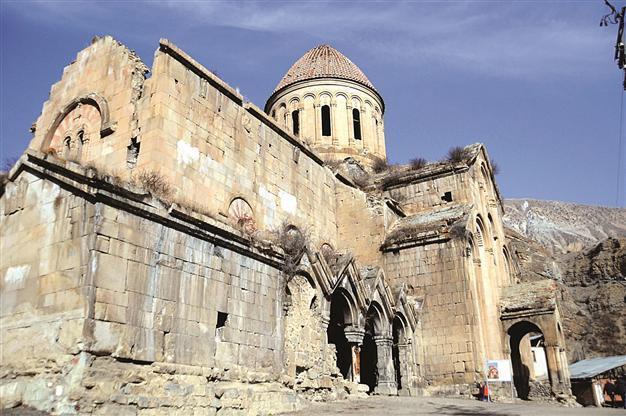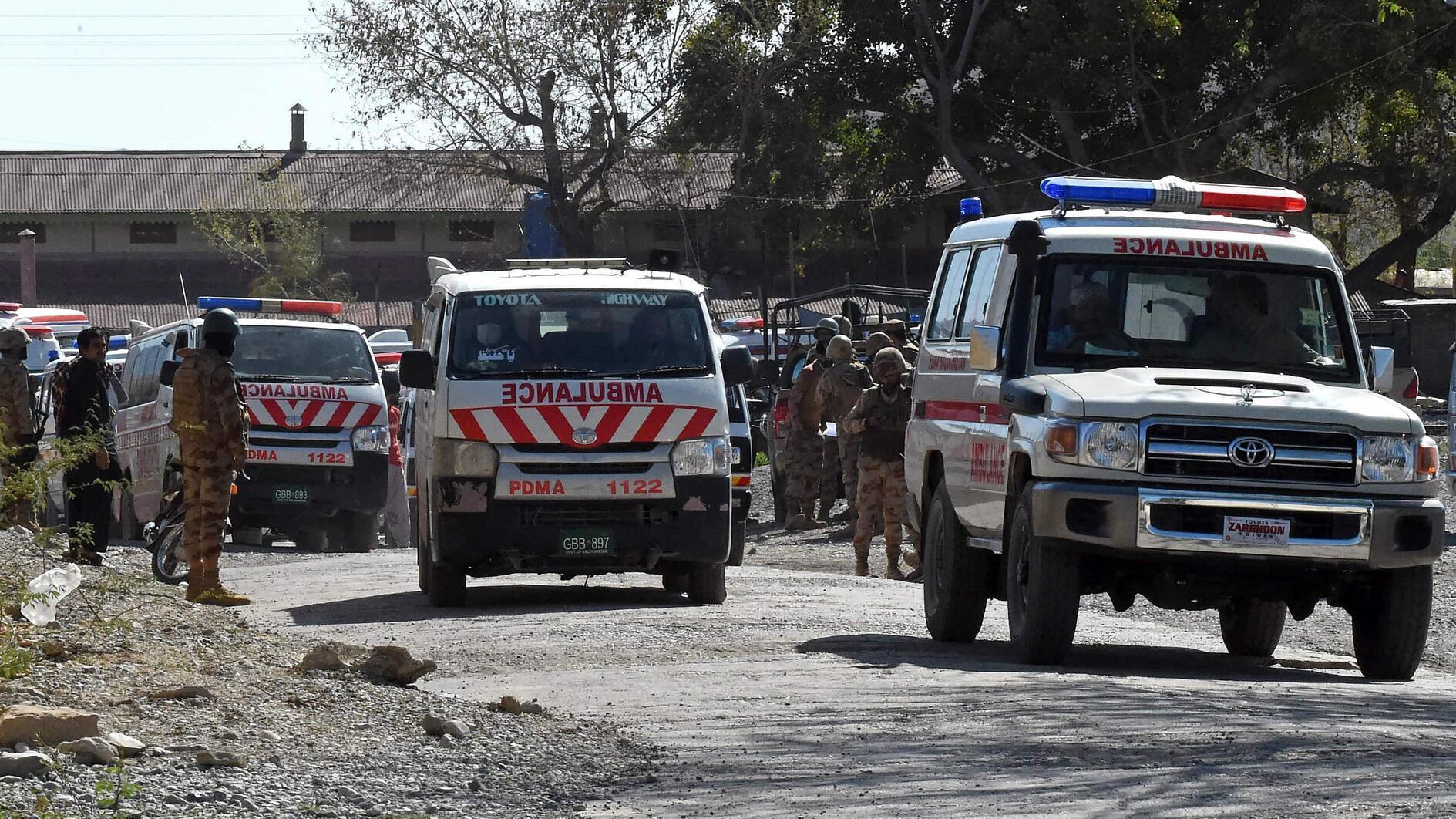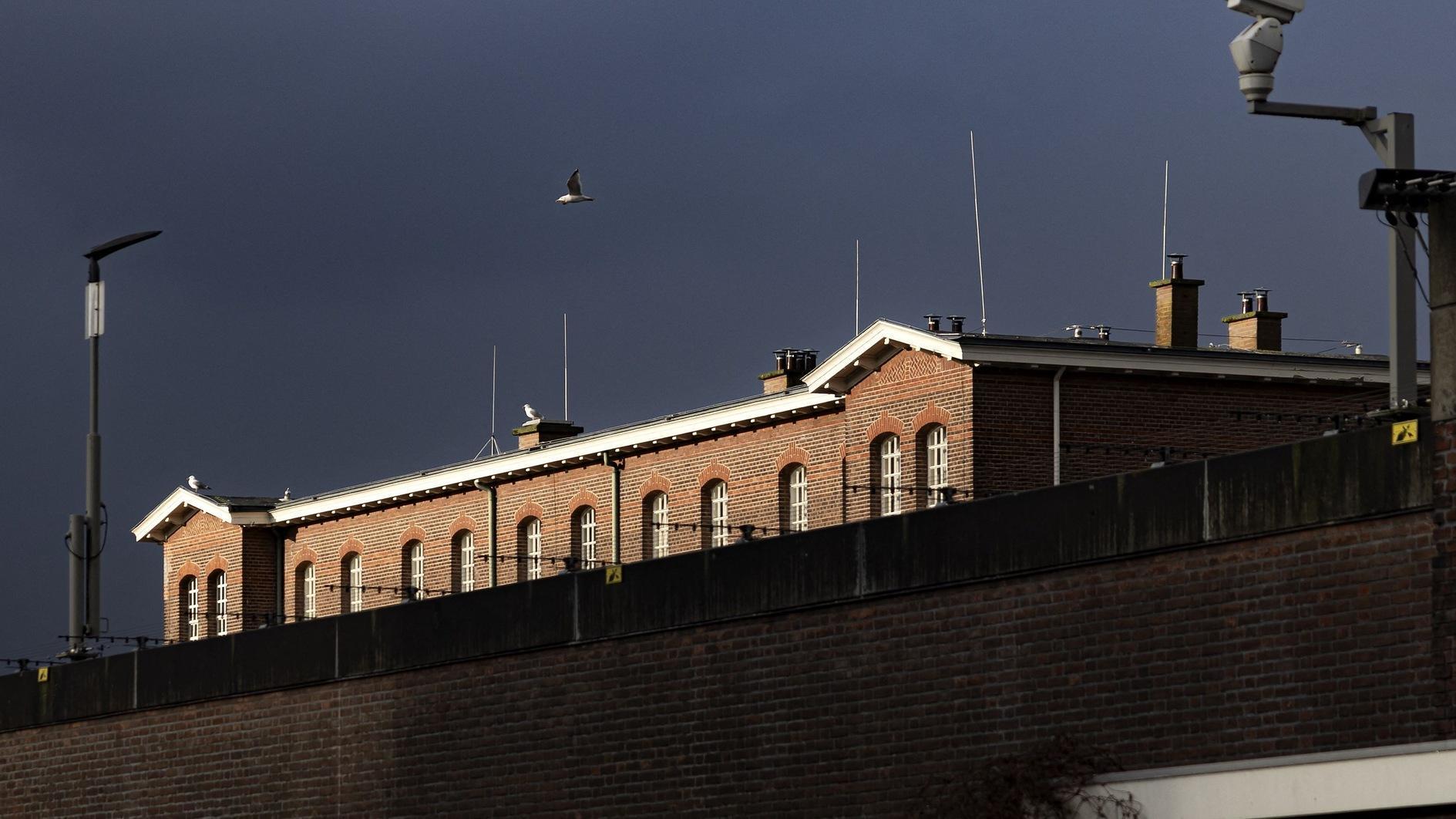Georgian monastery in Eruzum to regain its glory
ERZURUM - Anadolu Agency

The monastery has been plundered by treasure hunters and has practically collapsed at this point, but after the restoration process, it will return to its old days. AA Photo
The Öşvank Monastery in the eastern province of Erzurum’s Uzundere district will be restored with stones to be brought from a historic stone pit. The church was built by Georgian King Curopalate Adernese’s sons between 963 and 973.The monastery, which was visited by Georgian President Giorgi Margvelashvili in January, will serve as tourism after being restored with the stones that were used in its construction centuries ago.
The monastery has been plundered by treasure hunters and has practically collapsed at this point, but after the restoration process, it will return to its old days.
Uzundere Mayor Halis Özsoy said as a result of research for the restoration of the church, they had found out that old stone pits had been used in its construction. The mayor said the stone pits were very close to the church, adding, “Our examinations in the stone pits showed that the traces of hammers still existed on some stones. The church will be restored with these stones and regain its magnificence. Locals made great contributions to us to finding the stone pits. They knew from generation to generation that there were stone pits here. They sometimes restored their own houses by bringing stones from these pits.”
Stones for survival
Özsoy said the use of those stones in the church’s restoration would be very important for its survival, adding that the church would be healthier and authentic with the stones from three stone pits.
He said that thanks to the locals, the monastery had still survived. “The monastery looks like ruins. Its various parts have been removed by treasure hunters and it has the risk of collapsing. Four years ago, burglars stole one of the embroidered columns in the entrance of the monastery and put a log to prevent the collapse of its ceiling. When the log decayed, the locals strengthened the church.”
One of the most significant historical structures in eastern Anatolia, the Öşvank Monastery is in the village of Çamlıyamaç. It was constructed between 963-973 A.D. and was dedicated to St. John the Baptist and donated by the Bagratid brothers, sons of the Georgian Curopalate Adernese, King David and Prince Bagrat.
During the time when the region was under the reign of the Byzantine Emperors, the dome of the church was repaired by the Emperors Basil II and Constantine VIII. In the 11th century, the monastery was one of the most important bishoprics in the region and a center of culture, especially famous for its manuscripts. It preserved its importance until the end of the 15th century. At the end of the 19th century, the church was converted into a mosque and functioned as a place of worship until 1980. In 1985 the Ministry of Culture designated it as a monument to be protected and preserved and included it on its national heritage list.
















